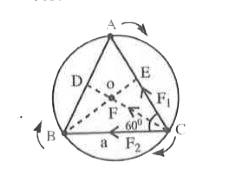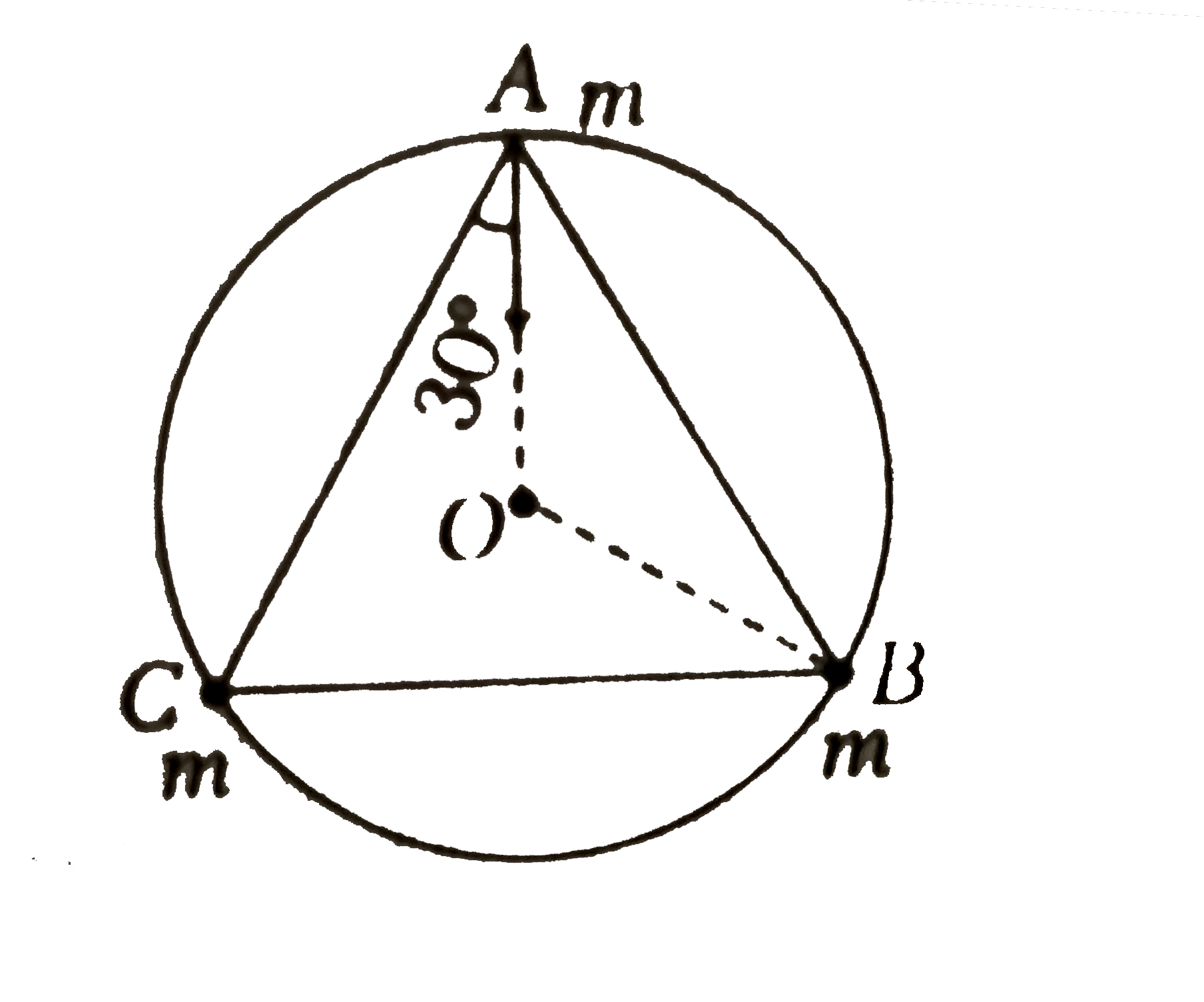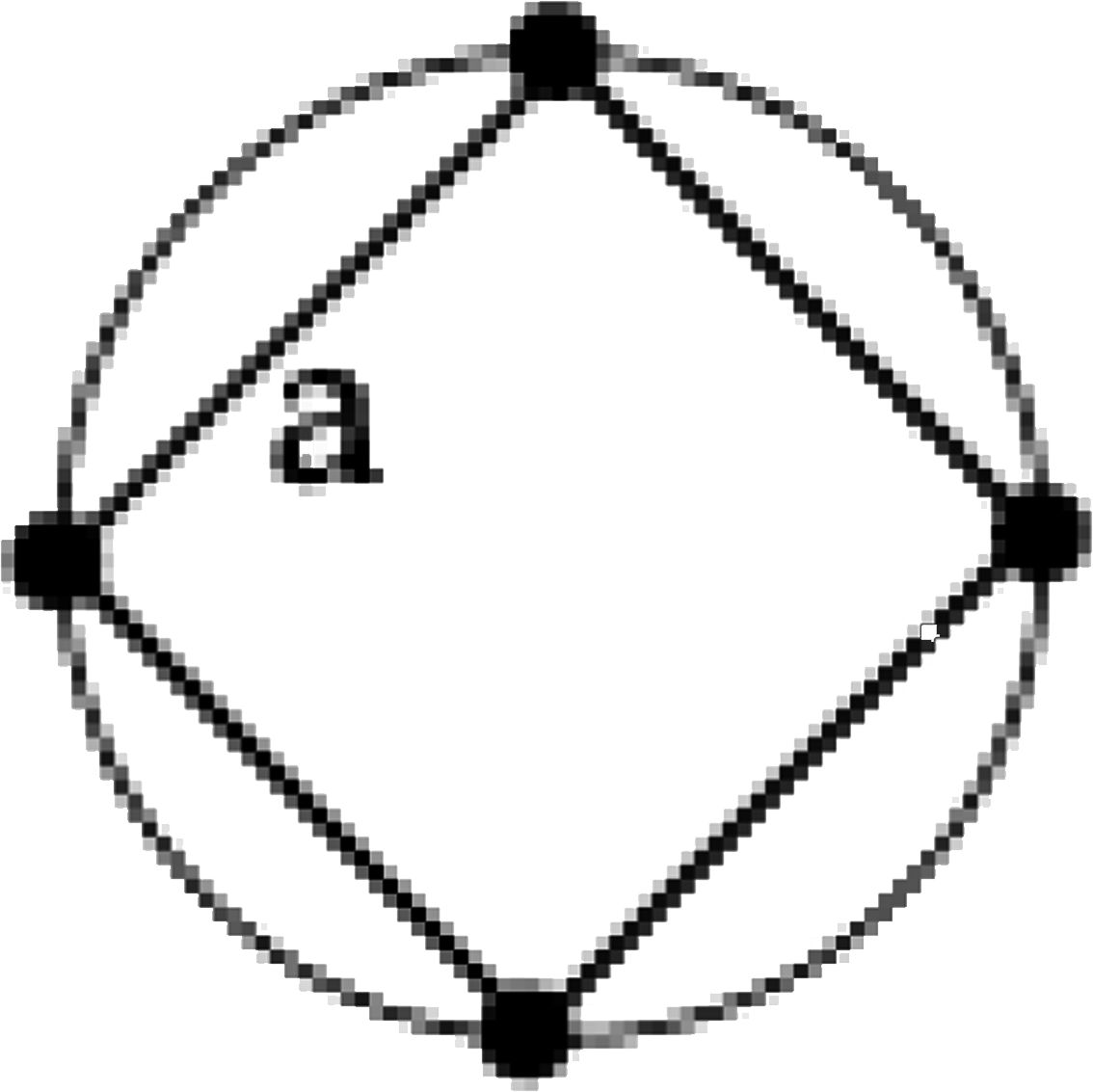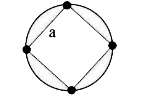Three identical bodies, each of mass m, are located at the vertices of an equilateral triangle with side a. At what speed must they move if they all revolve under the influence of one another.s gravitation in a circular orbit circumscribing the triangle while still preserving the equilateral triangle ?

The force of attraction on body C due to bodies at A and B are
F1=Gm2a2 along CA and F2=Gm2a2 along CB
The resultant force on the body at C is
F=√F21+F22+2F1F2cos60∘=√3F1=√3Gm2a2
(∵F1=F2=Gm2a2)
The resultant force acting along CD, Here OC=a√3
When each body is describing a circular orbit with centre of orbit at O, the force F provides the required centripetal force. The radius of the circular orbit is OC = a/√3, If V is the speed of the body in circular orbit , then Centripetal force = resultant gravitational force
mV2a/√3=√3Gm2a2 or V=√Gma
Topper's Solved these Questions
- GRAVITATIONBook:AAKASH SERIESChapter:GRAVITATIONExercise:Exercise-I
Explore 124 Videos
- GRAVITATIONBook:AAKASH SERIESChapter:GRAVITATIONExercise:Exercise-II
Explore 78 Videos
- GAUSS.S LAW Book:AAKASH SERIESChapter:GAUSS.S LAW Exercise:PROBLEMS (LEVEL - II)
Explore 12 Videos
- GRAVITATIONALBook:AAKASH SERIESChapter:GRAVITATIONALExercise:EXERCISE -3
Explore 154 Videos
Similar Questions
Three particle each of mass m, are located at the vertices of an equilateral triangle of side a. At what speed must they move if they all revolve under the influence of their gravitational force of attraction in a circular orbit circumscribing the triangle while still preserving the equilateral triangle ?

View SolutionFour identical particles of mass M are located at the corners of a square of side 'a'. What should be their speed if each of them revolves under the influence of others' gravitational field in a circular orbit circumscribing the square?

View Solution
Knowledge Check
Three particle each of mass m, are located at the vertices of an equilateral triangle of side a. At what speed must they move if they all revolve under the influence of their gravitational force of attraction in a circular orbit circumscribing the triangle while still preserving the equilateral triangle ?
 A√GmaB√2GmaC√3GmaD√4Gma
A√GmaB√2GmaC√3GmaD√4GmaThere are three identical point mass bodies each of mass m locted at the vertices of an equilateral triangle with side r. They are experting gravitational force of attraction on each other, which can be given by Newton's law of gravitaiton. Each mass body produces its gravitational field in the surrounding region. the magnitude of gravitational field at a point due to a point mass body is the measure of gravitaitonal intensity at that point. The gravitational potential at a point in a gravitational field is the amount of workdone in bringing a unit mass body infinity to the given point without acceleration.

Answer the following questions :
At what speed must they move if they all revolve under the influence of one another's gravitation in a circular orbit circumsribing the triangle still preserving the equilateral triangleAGmrB√2GmrC√GmrD√3GmrThree identical particles each of mass "m" are arranged at the corners of an equiliteral triangle of side "L". If they are to be in equilibrium, the speed with which they must revolve under the influence of one another's gravity in a circular orbit circumscribing the triangle is
A√3GmLB√GmLC√Gm3LD√3GmL2
Three particles each of mass m=1 kg, are located at the vertices of an equilateral triangle of side a =4m. The speed at which they must move to revolve in a circular orbit, under the inluence of mutual gravitational force, circumscribing and preserving the equilateral triangle is v=n√G, then the value of n is
View SolutionFour identical particles of mass M are located at the corners of a square of side ‘a’. What should be their speed if each of them revolves under the influence of others’ gravitational field in circular orbit circumscribing the square ?

View SolutionThree particles each of mass m are kept at vertices of an equilateral triangle of side L. The gravitational field at centre due to these particle is
View SolutionThree indentical bodes of mass M are locatd at the verticles of an equailateral triangle of side L they revolve undr the effect of mutual gravitational force in a circular orbit circumscibing the traingle while preserving the equilateral triangle their orbital velocity is
View SolutionThree particles each of mass m are kept at vertices of an equilateral triangle of side L. The gravitational field at centre due to these particle is
View Solution

